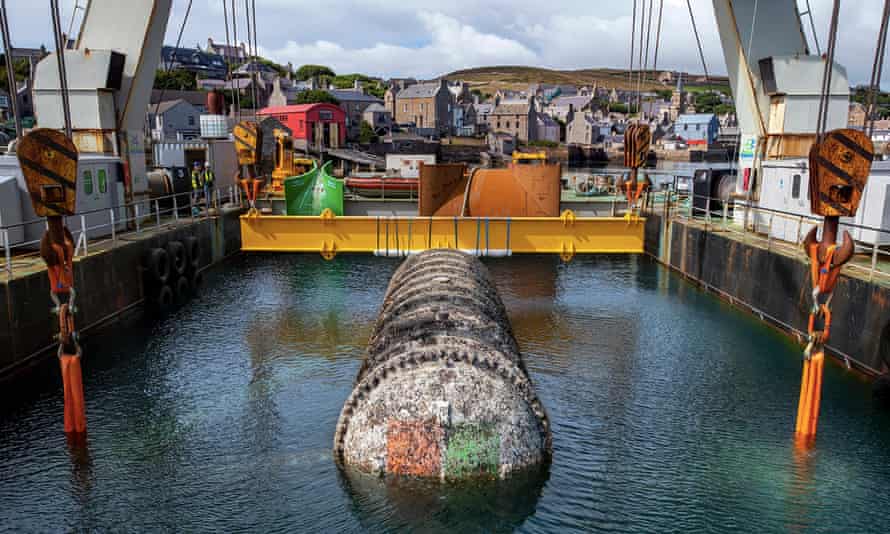Corporations are pledging to be ‘water positive’. What does that mean? | Environment
One of PepsiCo’s largest food manufacturing plants sits in the perennially water-stressed Valley of Mexico watershed, which provides water to 21 million people in Mexico City and its surrounding suburbs. The aquifer running below the city is so drastically depleted that the metropolis is sinking as the water table falls, and the pipes that bring water in from far-off rivers and lakes are in disrepair.
“The city cannot provide the water that we need, so we truck it in,” said Roberta Barbieri, vice-president for global sustainability at PepsiCo. It’s an expensive solution to an intractable problem – the water shortage is not sustainable from either a human or business standpoint. So Pepsi has promised to decrease its water consumption in the region and replenish what it uses. By treating wastewater on site, for example, the factory can reuse 80% of the water it draws from the tap or the truck. “We’re pushing to get that close to 100%,” Barbieri said.
The efforts are part of the company’s “water positive” commitment to put more water into areas where they operate than they take out.
The last year has seen a flurry of such promises from large corporations. Microsoft, Facebook and Google have all pledged to replenish more water than they use in their direct operations by 2030. BP has set a target year for 2035, and Gap for 2050.
These pledges are coming at a time of huge pressure on global water resources, exacerbated by the climate crisis. More than 1.7 billion people live in river basins that are being depleted by overuse, and the UN predicts a 40% shortfall in freshwater resources by 2030.
The impacts of the water crisis on business are increasingly clear – threatening semiconductor production in Taiwan, scuttling plans for a brewery in Mexico and sending investors competing for water rights in the Colorado River basin. “Sustainable water supplies are not a given any more,” said Kirsten James, director of water for the corporate sustainability non-profit Ceres.

Water-positive pledges aim to help companies align with UN goals for people to have adequate access to clean water while also securing their own water supply. It’s a question of reputation, too, said Colin Strong, manager of corporate water stewardship at the World Resource Institute. Businesses working in areas of water scarcity don’t want to be viewed as making the problem worse.
But while experts say it’s encouraging to see corporations making commitments on water, some are concerned that these voluntary pledges can lack precise definitions and accountability mechanisms.
What does ‘water positive’ mean?
There is no formal definition for “water positive”, said Strong, and companies’ plans differ in detail and scope.
What differentiates water positive from just saving water is the focus on areas where water security is a problem and overcompensating for consumption in those places. “Water security is a hyperlocal issue,” said Simon Fischweicher, head of North American corporations and supply chains for the environmental nonprofit CDP.
Once companies have identified areas where water scarcity is an issue, they then look for ways to cut back on water and make up for what they are using. “The goal is not to use the minimum amount of water, it is to minimize the negative impacts associated with the use of water, and those impacts can vary greatly,” Strong said.
Pepsi’s snack factory in Mexico City is one of 99 manufacturing facilities the company owns in high water risk areas. The company has a range of strategies that it says will reverse its impact on the strapped watershed.
For instance, after water is run through the lines and tanks to switch from Pepsi to Mountain Dew at one Mexico City bottler, it is treated to drinking-safe standards, then trucked nine miles to the company’s factory in the Vallejo Industrial Zone, where it’s used to wash potatoes to make Sabritas chips. The project has cut freshwater demand at the Sabritas plant in half, according to PepsiCo.
The company also finances environmental restoration work in other parts of the watershed, where the Nature Conservancy is planting native coniferous trees to protect waterways. “We’re not making new water – because nobody can do that – but what we can do is go upstream and partner with local NGOs … to restore the natural system that’s been degraded, largely by human influence,” said Barbieri.
Microsoft, Google and Facebook have or are building wastewater treatment plants at some of their offices to recycle water for flushing toilets and watering plants. Most of the tech companies’ water use, however, goes to cooling equipment in their data centers, some of which are located in drought-prone regions of the American west and south-west.
Google started using reclaimed wastewater nearly a decade ago at its data center in Douglas county, Georgia. Microsoft is now doing the same in Washington state, Amsterdam and Dublin. It is also testing waterless cooling systems, such as dunking computer servers into fluid that boils off the heat they generate, or sinking data centers into the ocean, to release heat into the seawater.

Like PepsiCo, these companies fund the work of non-profits and local utilities to improve the health and resilience of local watersheds. Projects include removing water-hogging invasive plant species, buying up farmland to assume and retire its water rights, capturing stormwater to help replenish depleted underground aquifers and reforesting areas destroyed by wildfires.
Facebook has invested in 14 restoration projects in high water stress areas where it has data centers, which it estimates will replenish 3.2bn liters of water (in 2020, it sent 3bn liters to its data centers). Last year the company said it restored about 2.3bn liters.
To ensure the math checks out on any given pledge and the benefits are sustained, publicly disclosed monitoring and interim milestones are critical, James said: “We can’t have a commitment way out in 2050 and then just cross our fingers that it’s going to be met.”
BP’s pledge requires the company to reach 20% of the way towards water positive in 2025. Pepsi, Microsoft and Gap track yearly progress by responding to CDP’s standardized water security survey as well as including water in annual sustainability reports.
Hoping for a waterfall effect
To truly keep from draining the planet’s limited supply of fresh water, companies need to look beyond their own operations, to their supply chains, James said.
That’s particularly important for industries that are historically large polluters and rely heavily on natural resources, such as agriculture, food and beverage, fashion, semiconductors and mining. “For most companies the majority of their impact is in their supply chain,” said Strong.
Some companies do have broader plans. Pepsi includes company-owned as well as third party owned manufacturing plants in its 2030 water positive goal, and says it has increased water-use efficiency by 14% across its agricultural supply chain in high water risk areas.
Corporate commitments to being water positive “are good and important on paper”, said Michael Kiparsky, director of the Wheeler Water Institute at University of California, Berkeley, School of Law, but there’s much more companies can be doing.
“If these corporations are really, really serious about water, then they would throw their clout behind supporting attempts to improve governance of water,” Kiparsky said. That might be policies around water rights, guaranteeing safe drinking water or improving infrastructure such as pipes and treatment plants.
“I do not think that these companies are engaging in greenwashing,” Kiparsky said, “but there is so much more they could do for water if they are really serious about it.”
Source: theguardian.com

